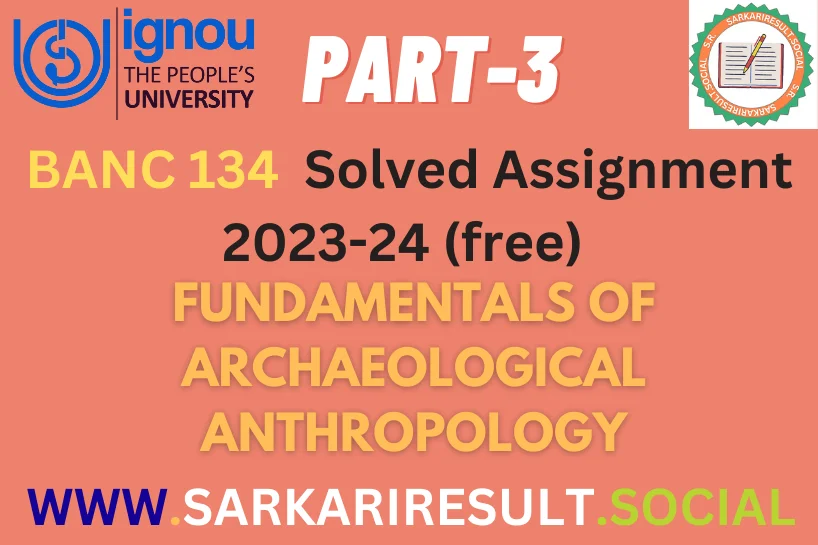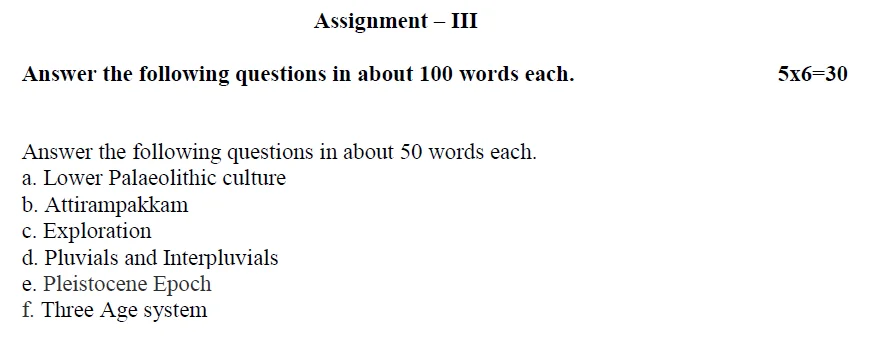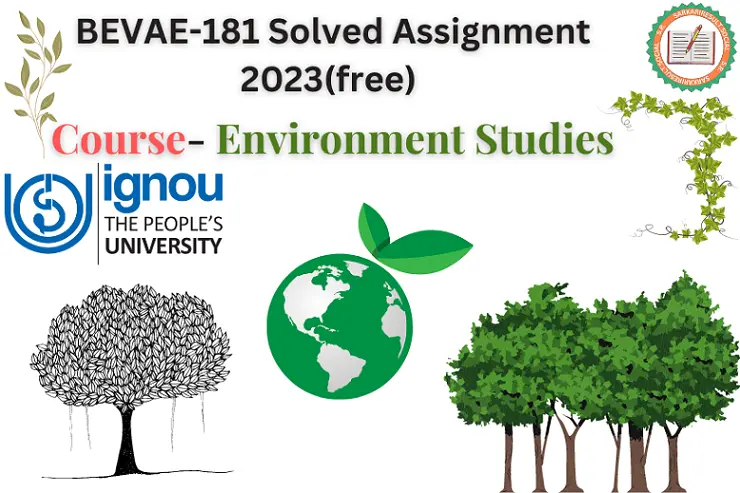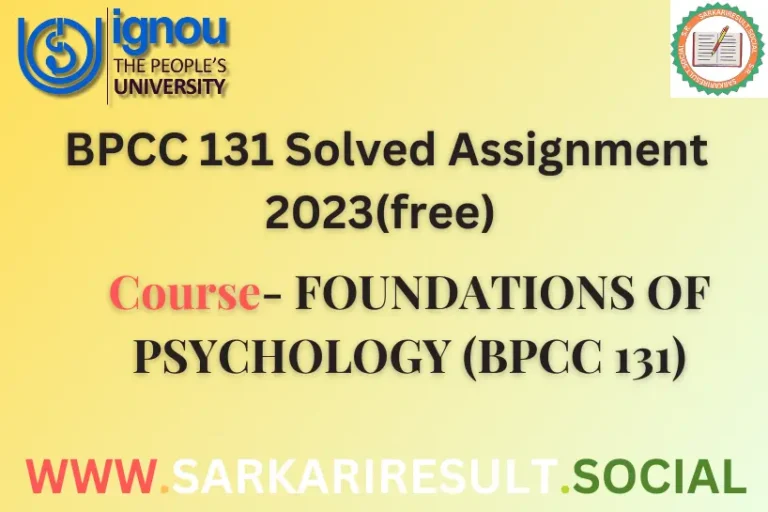BANC-134 IGNOU Solved Assignment 2023-24 (free) Part 3

BANC-134 IGNOU Solved Assignment 2023-24 (free) Part 3
Complete your journey of BANC-134 IGNOU Solved Assignment 2023-24 (free) Part 3. In Assignment III, you’ll find six comprehensive questions. These solved answers will guide you towards success in your IGNOU solved assignments for 2023-24.

a. Lower Palaeolithic culture
Ans. The Lower Paleolithic culture, spanning from around 2.5 million years ago to about 200,000 years ago, represents the earliest stages of human cultural and technological development. During this period, early hominins, such as Homo habilis and Homo erectus, created simple stone tools, mainly through the Oldowan and Acheulean traditions. These tools served primarily for basic tasks like cutting and scraping. Lower Paleolithic humans were nomadic hunter-gatherers, relying on natural resources for sustenance. Their culture lacked complex social structures or permanent settlements, and their survival was dependent on essential tool making skills and adaptation to changing environments.
Also Read This: BANC-134 IGNOU Solved Assignment 2023-24 (free) Part 1
b. Attirampakkam
Ans. Attirampakkam is a significant archaeological site in southern India, located in the state of Tamil Nadu. It gained prominence due to the discovery of ancient stone tools, mainly handaxes and cleavers, that date back to the Acheulean culture, making them around 1.07 million years old. These findings suggest that early hominins, likely Homo erectus or a related species, inhabited this region during the Lower Paleolithic period. The site provides valuable insights into the technological and cultural advancements of early human ancestors in the Indian subcontinent and their ability to adapt to diverse environments over a million years ago.
Also Read This: BANC-134 IGNOU Solved Assignment 2023-24 (free) Part 2
c. Exploration
Ans. Exploration is the act of discovering, investigating, or venturing into unknown or unfamiliar territories, whether geographical, scientific, or intellectual. It involves a spirit of curiosity, seeking to expand knowledge, find new resources, or understand the mysteries of the universe. Exploration has played a pivotal role in human history, driving discoveries of new lands, species, technologies, and ideas. Famous explorers like Christopher Columbus, Marco Polo, and Marie Curie have reshaped our understanding of the world. Today, exploration continues in space, the deep sea, and scientific research, pushing the boundaries of human knowledge and expanding our horizons.
Also Read This: BANC-133 IGNOU Solved Assignment 2023-24 (free) Part 1
d. Pluvials and Interpluvials
Ans. Pluvials and interpluvials are climatic phases in Earth’s history. Pluvials represent periods of increased rainfall and wetter conditions, leading to the expansion of lakes, rivers, and vegetation. These phases often contrast with arid intervals, such as glacial periods. Pluvials can be essential for sustaining ecosystems and influencing human settlement patterns.
In contrast, interpluvials refer to drier intervals between pluvials. They are characterized by reduced rainfall, which can result in the contraction of lakes and rivers and the expansion of arid environments. Understanding pluvials and interpluvials is crucial for comprehending past climate variability and its effects on landscapes, ecosystems, and human societies.
Also Read This: BANC-133 IGNOU Solved Assignment 2023-24 (free) Part 2
e. Pleistocene Epoch
Ans. The Pleistocene Epoch, spanning from about 2.6 million years ago to approximately 11,700 years ago, is a geological epoch marked by recurring glaciations and interglacial periods. It is characterized by fluctuating global temperatures, resulting in extensive ice sheets that covered significant portions of the Earth’s surface during glaciations. These ice ages profoundly shaped landscapes, influencing the distribution of flora and fauna. The Pleistocene also witnessed the evolution of several hominin species, including Homo sapiens. As the most recent epoch before the Holocene, it had a profound impact on Earth’s geology, climate, and the evolution of life, leading to the diverse ecosystems we see today.
Also Read This: BANC-133 IGNOU Solved Assignment 2023-24 (free) Part 3
f. Three Age system
Ans. The Three Age System is a chronological framework used in archaeology and anthropology to classify human prehistory into three main periods: the Stone Age, the Bronze Age, and the Iron Age. Developed in the 19th century, it’s based on the dominant materials used for tools and weapons during each period. The Stone Age, the longest, encompasses the use of stone tools and is further divided into the Paleolithic, Mesolithic, and Neolithic periods. The Bronze Age introduced metalworking with bronze alloys, while the Iron Age saw the widespread use of iron. This system simplifies the study of human development and technological progress over millennia.







